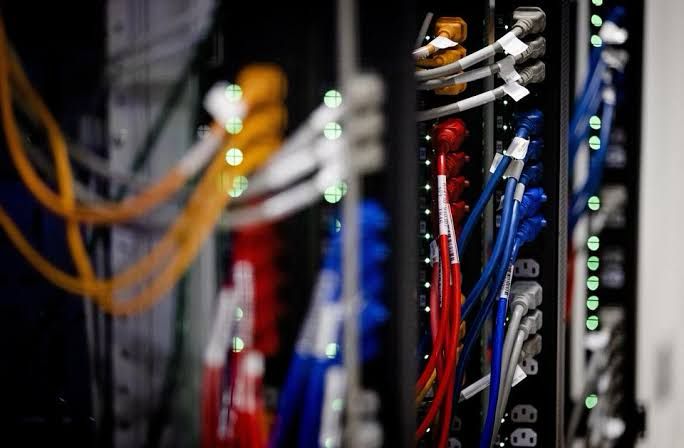
From voice assistants and recommendation engines to self-driving cars and medical diagnostics, artificial intelligence (AI), data science, and machine learning (ML) are transforming how the world operates. Together, these technologies form the backbone of intelligent systems that are reshaping industries—including finance, healthcare, and retail.
To understand the future, it’s essential to unpack how these three powerful forces work together.
Artificial Intelligence began as a set of systems designed to mimic human behavior. Early AI relied on rule-based logic—think of a robot programmed to follow exact commands like: “Walk two steps forward, turn left, take three more steps.” These early systems were predictable and worked well for fixed tasks, like the chess programs of the 90s that followed preset strategies.
But human intelligence isn’t rigid—it learns and adapts. That’s where machine learning changed the game.
Unlike traditional programming, machine learning enables computers to learn patterns and improve from data without being explicitly programmed for every outcome. For instance, modern spam filters don’t just block messages with suspicious keywords—they analyze patterns in millions of messages to continuously refine their detection abilities.
Then there’s deep learning, a subfield of ML that uses artificial neural networks to handle complex tasks like image recognition, speech-to-text conversion, and language translation with impressive accuracy.
And now we’re entering the era of *Generative AI. Unlike older models that analyze or classify data, generative models can *create entirely new content—whether it’s writing articles, generating images, composing music, or even coding. Tools like GPT-4 and DALL·E are prime examples of this shift, blending analytical power with creativity.
So where does data science come in? It’s the practice of extracting insights from both structured data (spreadsheets, databases) and unstructured data (emails, images, social media). Think of data science as the process of turning raw information into actionable intelligence.
It involves a mix of data collection, cleaning, analysis, and visualization. But it also requires one critical element: domain expertise.
For example, a data scientist in healthcare must not only build accurate models but also ensure those models provide useful predictions. A system predicting if a patient will be readmitted in 15 years may be precise—but not particularly helpful. One that flags likely readmission within 15 days, however, can significantly improve patient care.
Until recently, data science was limited to those with advanced coding and statistical knowledge. But platforms like *Keras, *TensorFlow, and low-code tools are lowering the barrier. Today, it’s possible to build smart models with minimal code—or no code at all.
This democratization of AI means more professionals, regardless of background, can participate in AI development. Domain knowledge is becoming just as valuable as coding, especially when it comes to spotting anomalies and making practical decisions based on data.
For instance, if a record shows a patient is 300 years old, a data-savvy professional might recognize that the system likely recorded the birth year instead of calculating age—something an algorithm alone might miss.
Training a machine learning model is much like teaching a child. The model starts with no knowledge and learns by studying examples. Say you’re training it to predict house prices using data like square footage, number of bedrooms, and location.
Initially, its predictions will be off. But over time, the model adjusts based on its errors, becoming more accurate as it processes more examples. This learning process is measured using metrics like mean absolute error, which tracks how far off its predictions are on average.
In this setup:
Machine learning generally falls into two categories:
Often, real-world datasets include dozens or even hundreds of features. This makes visualizing or understanding them challenging.
That’s where dimensionality reduction techniques like Principal Component Analysis (PCA) come into play. PCA helps compress large datasets into two or three dimensions—enabling humans to interpret and visualize the results more easily.
In natural language processing, for instance, word embeddings might represent words in 200 dimensions. Reducing that down for visualization helps identify how words relate to each other—grouping terms like “growth” and “scale,” or “book” and “story.”
None of these advanced systems would work without the foundational role of data engineering. Data engineers build the pipelines that move, clean, and prepare data for analysis. Whether it’s streaming financial data or managing hospital records, they ensure the data is trustworthy and usable.
A model is only as good as the data it’s fed—clean, structured, and timely information is essential for success.
AI is no longer a far-off fantasy. It’s already shaping the way we shop, work, heal, and learn. But creating real impact requires more than smart algorithms—it demands collaboration across disciplines, clean and accurate data, and an ethical approach to building and using intelligent systems.
As the tools become more accessible, the real power of AI will come from those who know how to ask the right questions, apply insights meaningfully, and build responsibly.
The future isn’t just about smarter machines—it’s about smarter decisions. And that future is already unfolding.